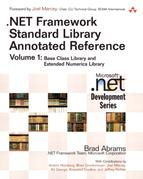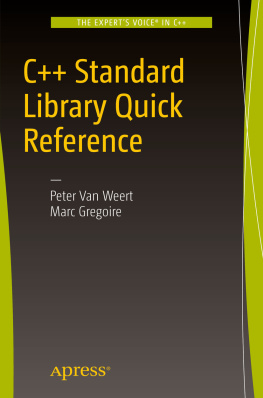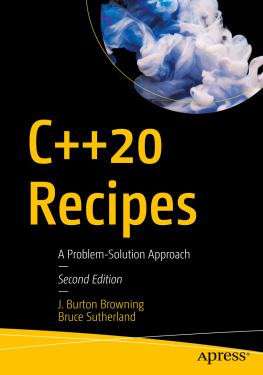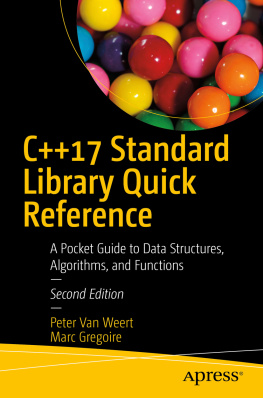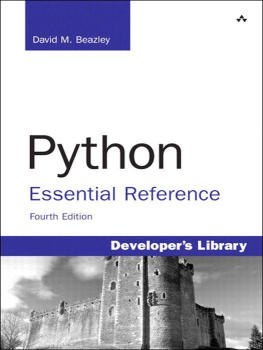Brad Abrams - .NET framework standard library annotated reference : base class library and extended numerics library
Here you can read online Brad Abrams - .NET framework standard library annotated reference : base class library and extended numerics library full text of the book (entire story) in english for free. Download pdf and epub, get meaning, cover and reviews about this ebook. City: Boston, year: 2004, publisher: Addison-Wesley Professional, genre: Computer. Description of the work, (preface) as well as reviews are available. Best literature library LitArk.com created for fans of good reading and offers a wide selection of genres:
Romance novel
Science fiction
Adventure
Detective
Science
History
Home and family
Prose
Art
Politics
Computer
Non-fiction
Religion
Business
Children
Humor
Choose a favorite category and find really read worthwhile books. Enjoy immersion in the world of imagination, feel the emotions of the characters or learn something new for yourself, make an fascinating discovery.
- Book:.NET framework standard library annotated reference : base class library and extended numerics library
- Author:
- Publisher:Addison-Wesley Professional
- Genre:
- Year:2004
- City:Boston
- Rating:3 / 5
- Favourites:Add to favourites
- Your mark:
.NET framework standard library annotated reference : base class library and extended numerics library: summary, description and annotation
We offer to read an annotation, description, summary or preface (depends on what the author of the book ".NET framework standard library annotated reference : base class library and extended numerics library" wrote himself). If you haven't found the necessary information about the book — write in the comments, we will try to find it.
Edited by a Lead Program Manager on Microsofts
.NET Framework team, .NET Framework Standard Library
Annotated Reference, Volume 1, is the definitive reference
for the .NET Framework base class library. This book utilizes
extensive annotations and code samples from the creators of the
technology to move beyond the online documentation and provide .NET
developers with a dictionary-style reference to the most-used parts
of the Framework. This volume covers a subset of the ISO CLI
Standards, including the Base Class Library and the Extended
Numerics Library.
In the printed book you will find informative
overviews of each namespace covered and an easy-to-follow
alphabetic reference of types in the standard, including type-level
descriptions, sample code with output, and annotations from the
design team and standardization committee.
With the ECMA and ISO standards as its core, this
book includes:
Annotations from key members of the Microsoft design
team and the Standardization committee. Comments cover everything
from design rationale and history to common problems and
shortcomings.
An overview of each namespace, describing its
functionality and the inheritance hierarchy of types it
defines.
Type descriptions. Each type is covered in its own
chapter, with a detailed description of how the type is to be used
and a quick reference of the C# declaration syntax for all members
defined on the type. Also noted: which members are only available
in the Microsoft implementation of the .NET Framework, which are
not available in the .NET Compact Framework, and which are only
available in V1.1 of the .NET Framework.
Code samples. Types are illustrated by fully compilable
code samples with output included.
Reference tabs and an exhaustive index, which
allow readers to quickly and easily navigate the text.
Reusable source code for more than one thousand samples.
All code has been tested with versions 1.0, 1.1, and the 2.0
technical preview of the .NET Framework, and, where appropriate,
with the .NET Compact Framework.
Brad Abrams: author's other books
Who wrote .NET framework standard library annotated reference : base class library and extended numerics library? Find out the surname, the name of the author of the book and a list of all author's works by series.

